PRAISE FOR THE MAGIC KINGDOM
The Magic Kingdom is a most impressive achievement. More than a first-rate biography, this extraordinarily lucid booka work at once of genuine empathy and unsparing criticismis cultural history at its best.Robert Westbrook, author of John Dewey and American Democracy
As true a picture as I could have imagined.Fess Parker
This exhaustively researched and remarkably judicious volume should remain our best source on Walt Disney and his manifold enterprises for many years to come.Journal of American History
This lively, witty, and insightful study is likely to become a standardLibrary Journal
Mr. Watts is to be congratulated for producing a subtle, generous-minded account of [the Disney] legacy, and for reminding readers, after so much Disney-bashing, that there was a bright as well as a dark side to the magic kingdom.The Economist
The most responsible and comprehensive book on Disney's relationship to American culture in a long while.Seattle Times
An immensely thorough, thoughtful survey and syntheses of some sixty years of commentary about Disney, intertwined with Watts own remarkable perceptive assessments.Cleveland Plain Dealer
Relying on a mountain of archival and interview material, Watts does a masterful job of keeping the sometimes contradictory strands of Disney's life and work togetherMilwaukee Journal Sentinel
A thoughtful and well-researched biographywhich also provides a starting point for thinking about the Disney legacy today.Commentary
A fine example of academic research that is fully accessible to a nonacademic audience.Dallas Morning News
An admirable even-handed work.Stands well above the current, permissively silly academic standards for the discussion of pop culture.A new perspective.Washingtonian Monthly
BOOKS BY STEVEN WATTS
The Republic Reborn:
War and the Making of Liberal America, 17901820
The Romance of Real Life:
Charles Brockden Brown and the Origins of American Culture
The Magic Kingdom:
Walt Disney and the American Way of Life
Copyright 1997 by Steven Watts
First University of Missouri Press paperback printing 2001
University of Missouri Press, Columbia, Missouri 65201
Printed and bound in the United States of America
All rights reserved
5 4 3 10 09
Library of Congress Cataloging-in-Publication Data
Watts, Steven, 1952
The Magic Kingdom : Walt Disney and the American way of Life / Steven Watts.
p. cm.
Originally published: Boston : Houghton Mifflin, 1997.
Includes bibliographical references and index.
ISBN-10: 0-8262-1379-0 (alk. paper)
ISBN-13: 978-0-8262-1379-2 (alk. paper)
eISBN: 978-0-8262-7300-0
1. Disney, Walt, 19011966. 2. AnimatorsUnited StatesBiography. I. Title. NC1766.U52D5927 2001
791.43'92DC21
[B] 2001033595
 This paper meets the requirements of the American National Standard for Permanence of Paper for Printed Library Materials, Z39.48, 1984
This paper meets the requirements of the American National Standard for Permanence of Paper for Printed Library Materials, Z39.48, 1984
Printer and binder: Thomson-Shore, Inc.
For the Croatian Princess
We just try to make a good picture. And then the professors come along and tell us what we do
Walt Disney, Time, 1937
But how does a human being react to a stimulus? He's lost the sense of play he once had and he inhibits physical expression. He's the victim of a civilization whose ideal is the unbotherable, poker-faced man and the attractive, unruffled woman. Even the gestures get to be calculated. They call it poise. The spontaneity of the animalsyou find it in small children, but it's gradually trained out of them.
Walt Disney, Saturday Evening Post, 1954
Of all the activists of public diversion, Uncle Walt was the one most precisely in the American mainstreamin taste and morality, attitudes and opinions, prides and prejudices. The revealing clue is his familiar (and utterly sincere) statement that he never made a picture he didn't want his family to see. His competitors made pictures they thought, or guessed, the public wanted to see. Disney operated through maximum identification with John Doe; the others seek to discover what John Doe is like in order to cater to him.
John Bright, The Nation, 1967
Acknowledgments
WALT DISNEY HAS BEEN a presence in my life for as long as I can remember, and writing about him seems like the most natural thing in the world. My boyhood in the rural Midwest in the 1950s and early 1960s was saturated with his creations and productions. My attendance at a showing of Pinocchio with my great-aunt, an elderly schoolteacher who loved the movies, and one of my younger brothers created a vivid memory of Monstro the whale gobbling up bad little boys. My fascination with Davy Crockett inspired my father to make me a modified version of the famous coonskin hat, using a squirrel pelt with the tail hanging down the back, and a crude Kentucky long rifle cut silhouette-style out of a board. For a boy tromping around in the woods, they were good enough. On many late afternoons I was ritually mesmerized by The Mickey Mouse Club, eagerly ingesting the global documentaries and boisterously laughing at cartoons, obediently internalizing Jimmie Dodd's aphorisms, and ogling Annette Funicello for reasons that were compelling yet still rather mysterious. The first color television show I ever saw, with the entire extended family gathered at my grandparents house for the proud debut of this miracle machine, was Walt Disney's Wonderful World of Color.
Even much later, when cultural revolution had inspired in me a bushy beard, shoulder-length hair, threadbare clothes, radical political sloganeering, and rock-and-roll musicianship, a trip to Disney World produced a state of fascination bordering on euphoria. Rather ironically, the attractions, the atmosphere, and the people in this tightly managed amusement park created a magical, sparkling atmosphere for someone distraught over the bitter social divisions, bourgeois stuffiness, and coldhearted power politics of the early 1970s. When I went to raucous showings of Fantasia and Alice in Wonderland with large groups of college friends who had been, shall we say, suitably prepared for a fantasy experience, my reaction only intensified. Several years later, professional training as a cultural historian led me to a deeper, soberer consideration of this popular entertainer's influence. Walt Disney's curious status in modern Americabeloved popular figure and object of intellectual disdain, manipulator of a massive culture-industry machine and reassuring avuncular presenceseemed to cry out for explanation. These personal and public, emotional and intellectual influences have converged to produce this book.
It would never have been completed without the help of many people. First of all, the staff of the Walt Disney Archives at the Disney Studio in Burbank, California, has earned my heartfelt thanks. This facility is the mother lode of source material for the student of Disney, and over the course of many, many research trips during the last five years, I received valuable help in numerous ways from David R. Smith, Robert Tieman, Becky Cline, Collette Espino, and Adina Lerner. They graciously responded to my endless requests for materials, patiently answered a flood of questions, no matter how naive or uninformed, and provided road maps and directions to a country boy struggling to navigate the Los Angeles freeway system. Dave and Robert also combed through the entire manuscript, correcting factual errors and misspellings and suggesting a variety of revisions and rethinkings. I very much appreciate the entire staff's cooperation and hard work. Even though they fired me on numerous occasions for outbursts of orneriness or incompetence, everyone at the Disney Archives has become my valued friend.

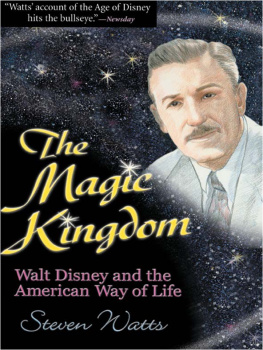
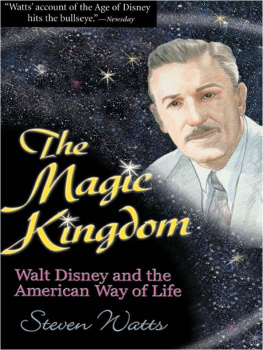
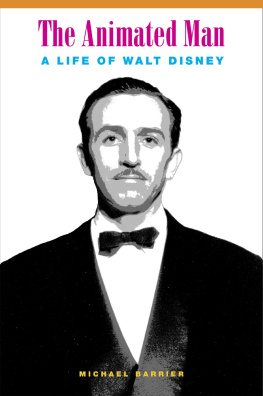

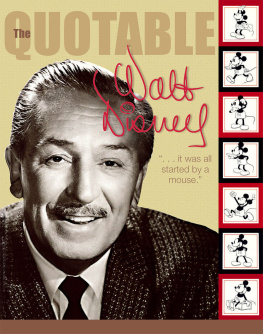

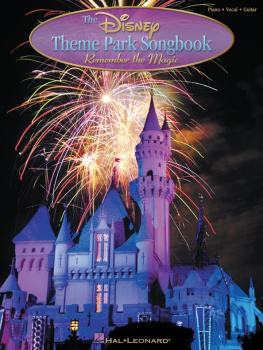
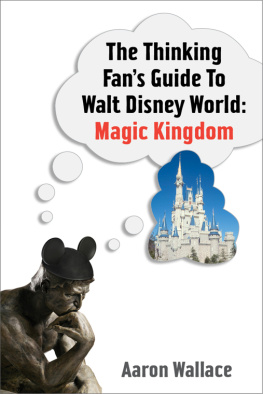
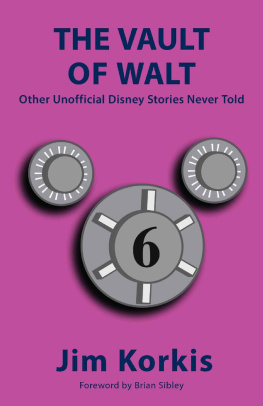
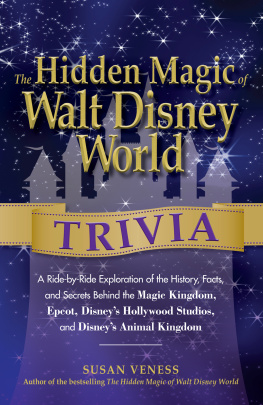
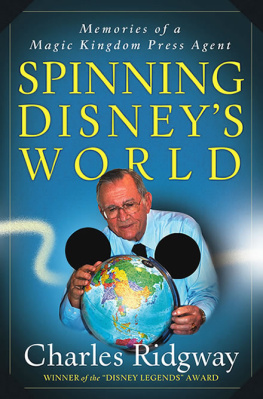
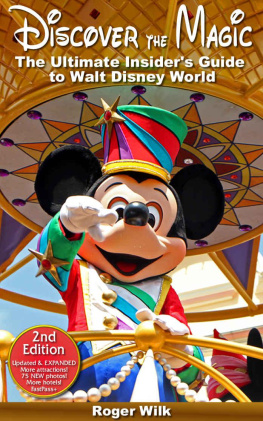
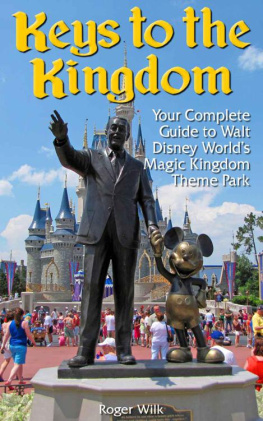

 This paper meets the requirements of the American National Standard for Permanence of Paper for Printed Library Materials, Z39.48, 1984
This paper meets the requirements of the American National Standard for Permanence of Paper for Printed Library Materials, Z39.48, 1984